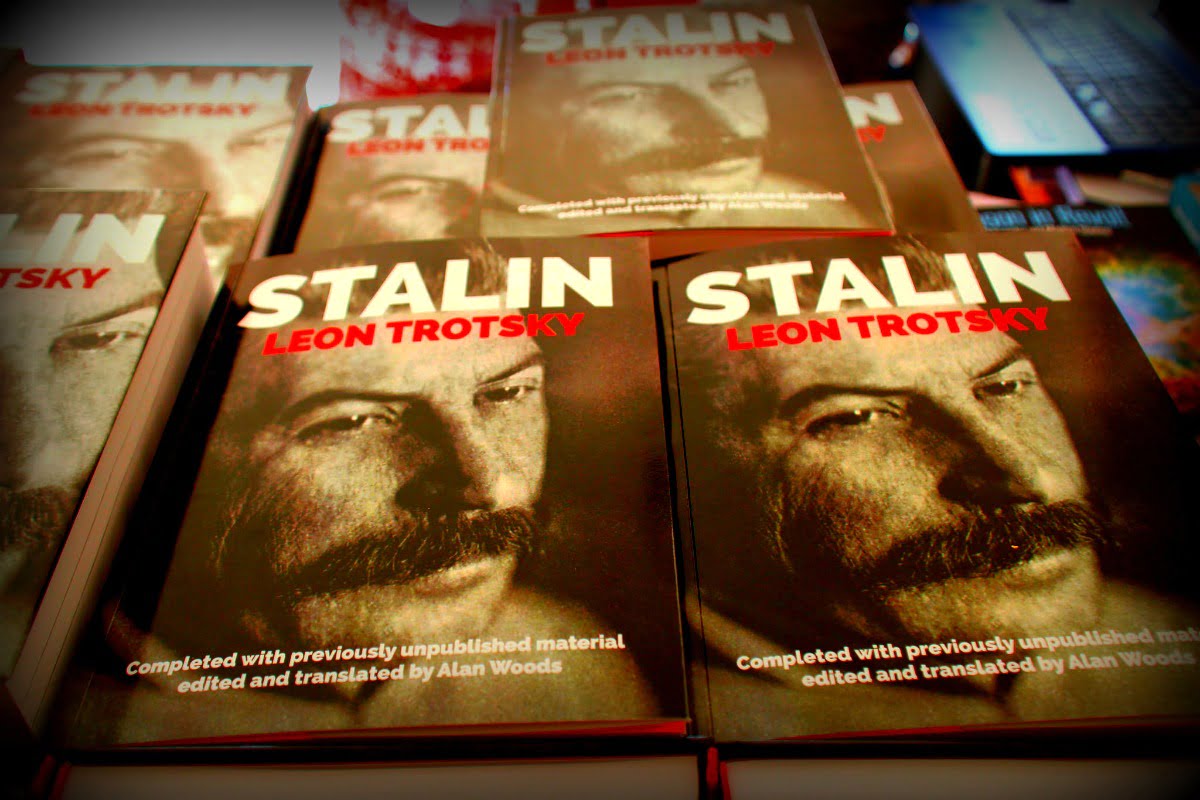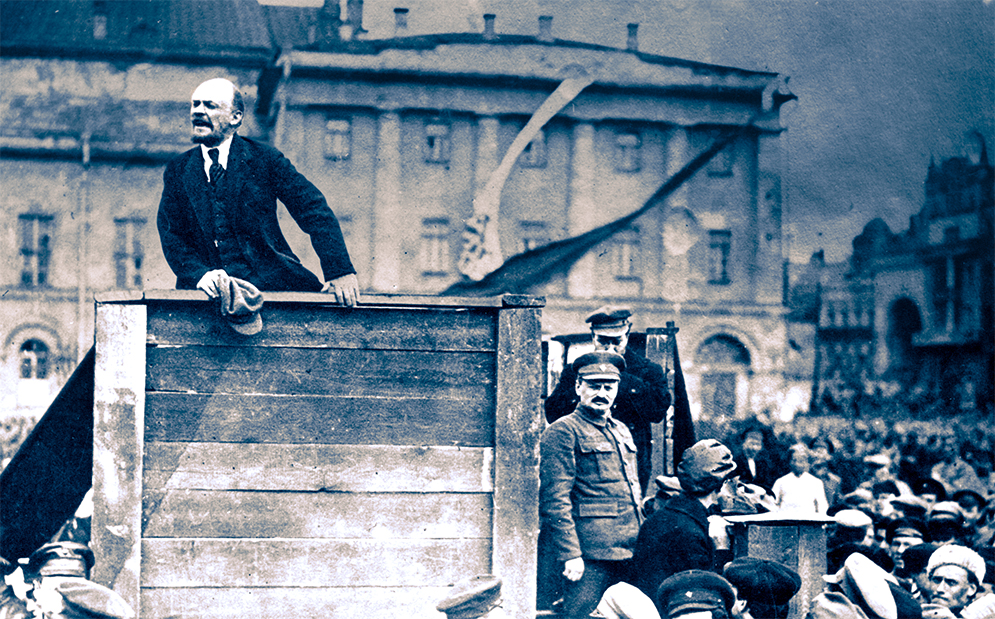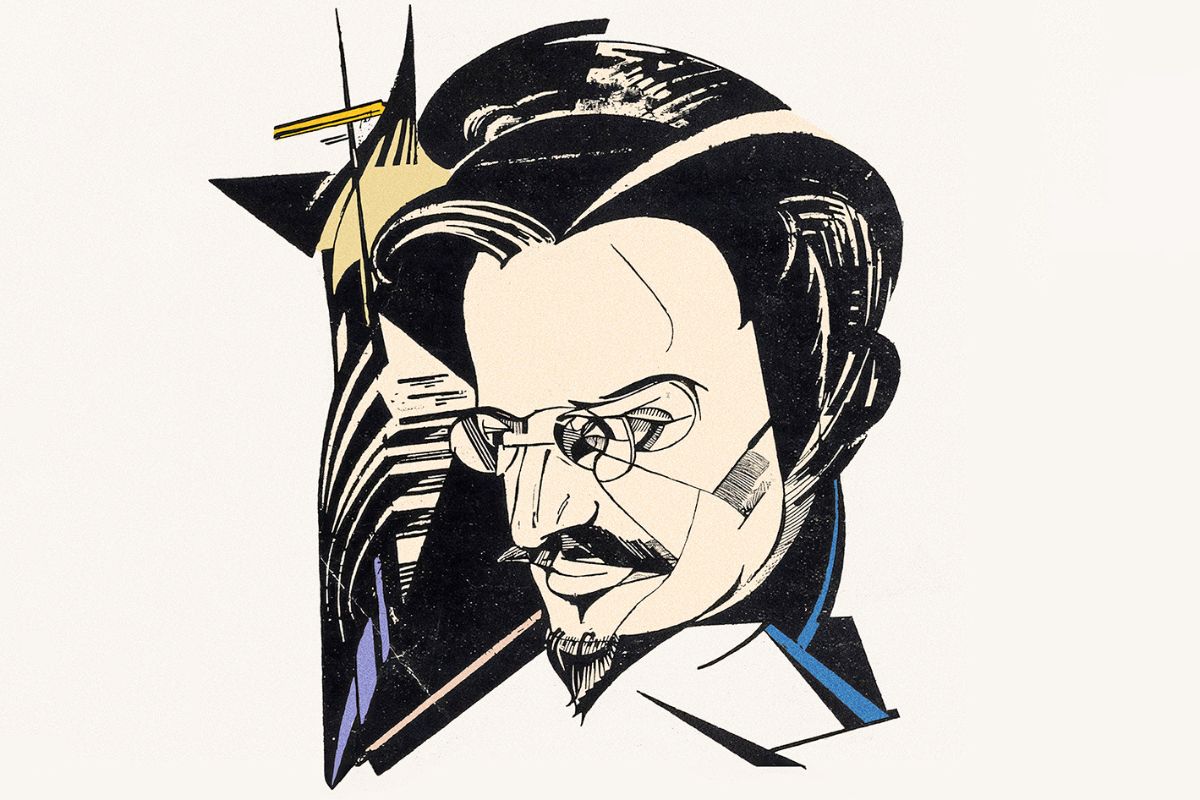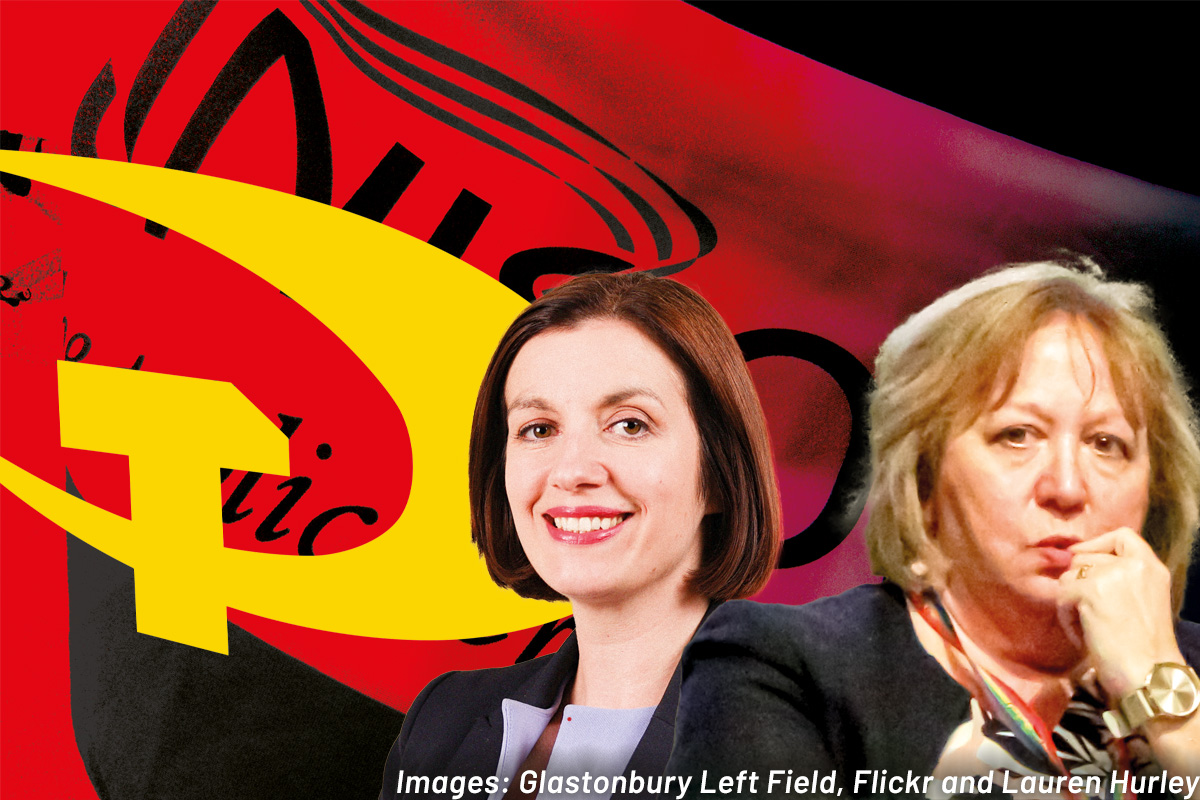This weekend marks the 76 anniversary of the death of Leon Trotsky, who was brutally attacked by a Stalinist agent on 20th August 1940. To celebrate the life of the heroic Russian revolutionary, the launch of his great unfinished work Stalin will be launched in Mexico tomorrow by Alan Woods and Trotsky’s grandson, Esteban Volkov.
This weekend marks the 76 anniversary of the death of Leon Trotsky, who was brutally attacked by a Stalinist agent on 20th August 1940 in Mexico. To celebrate the life of the heroic Russian revolutionary, the launch of his great unfinished work Stalin (published by Well Red books) will be launched in Mexico tomorrow (Saturday 20th August) by Alan Woods – editor of In Defence of Marxism – and Trotsky’s grandson, Esteban Volkov.
We publish below a background to Trotsky’s masterpiece, Stalin. Please find the details about the launch event here.
[Click here for an audio talk by Alan Woods about the life and ideas of Leon Trotsky, or read this article by Alan Woods: “In Memory of Leon Trotsky”.]
Habent sua fata libelli – “Books have their own fate”, a Roman author once wrote. And of no book in history is this more the case than Trotsky’s biography of Joseph Stalin, the newly completed edition of which will be launched next Saturday, 20 August, at the Museo Casa de Leon Trotsky, Mexico City.
This new version of Stalin, which was left unfinished at the time of the author’s death at the hands of a Stalinist agent, includes extensive unpublished material from the Harvard archives. The result is as close as possible to Trotsky’s original intentions for the work, providing a unique perspective on the Russian Revolution, its subsequent isolation and the rise of a bureaucracy expressed in the person of Stalin.
This book will contain 100,000 words of original, never-before-published material by Trotsky – a 30% increase on the 1946 edition. What is more, the previous editor Charles Malamuth’s own additions to Trotsky’s notes have been removed.
This highly anticipated publication will be introduced by its editor Alan Woods, the world-renowned Marxist and Russian linguist. His efforts in producing this version included translating some of Trotsky’s writing from Russian into English for the first time. After almost three years of constant, painstaking work alongside a raft of assistants, he is able to present the book in its final form.
“The new edition of Stalin has added to and enriched the vast arsenal of Marxist theory left behind by Leon Trotsky,” explains Esteban Volkov, Trotsky’s grandson and Director of the Trotsky House Museum. Volkov has spent most of his life fighting for this work to be restored, against the publication of previous editions, which omitted a considerable amount of Trotsky’s writing contained within this new version.
The venue chosen for this launch event reflects the significance of the work it celebrates. This biography of Stalin will be returning to the place where its author worked on it in the final years of his life. In fact, in the study where his brilliant mind was smashed with an ice pick, Trotsky had left the galley proofs of Stalin on his desk.
Tracing Stalin’s progression from obscurity in rural Georgia to the leading bodies of the Bolshevik Party, and then to the head of a monstrous regime, Trotsky explores the interplay between great historical events and the individuals they shape to a degree rarely found in Marxist literature.
“In making available for the first time the writing that was arbitrarily excluded from Stalin and hidden in dusty boxes for three quarters of a century,” as Woods remarks in his editor’s note, “we are providing a wealth of valuable material to the new generation that is striving to find the ideas to change the world.”
La Jornada reports
The publication of this book has aroused considerable interest in circles far beyond those of revolutionary militants. In its issue of Monday 8th August La Jornada, the most important Mexican daily paper wrote a lengthy article on this meeting. In it we read the following:
“On the 76th anniversary of his murder, a biography of Joseph Stalin written by Trotsky will be presented as part of the activities to commemorate the controversial Russian revolutionary who lived out his last years in exile in Mexico, announced his grandson Esteban Volkov, director of the house museum dedicated to the communist leader.
‘The book of a thousand pages, which is for now only available in English, is the work of British Marxist historian Alan Woods”, he said. ‘Woods, an expert on the ideas of Trotsky, was able to create a genuine version of the last book that Trotsky wrote – the biography of Stalin,’ Volkov explained.
“This book has a lot of history. Contrary to what many think, Trotsky did not write it in order to express his fury and resentment against Stalin, nothing could be further from the truth. He had no interest in writing this biography. His most passionate desire was to finish the second part of a book on the life of Lenin that he had already started.
“But he was obliged to change his plan for economic reasons. Volkov points out that we ‘lived in conditions of extreme hardship, so when an American publisher came up with a pretty attractive offer to commission a biography of Stalin, he threw himself into this work, gathering a lot of material, reports and data.’
“’He began a serious and detailed work, but unfortunately was murdered before he could finish it. Being more moved by commercial interests than ideological considerations, the American publishers handed the task of publication of the book to the translator Professor Charles Malamuth the translator. He practically destroyed the work, filling it with annotations of his own invention, while leaving out 30 or 40 percent of very interesting material written by Trotsky.’
“Volkov explained how a group of followers of Leon Trotsky and the historian Alan Woods took on the task of complementing the work. The first thing they did was to get rid of Malamuth’s annotations. Then, Woods ordered and classified the book in a logical and ideological sense, in accordance with the ideas of Trotsky, including all those documents and manuscripts that had not been published.
“Thus you arrive to this corrected and enlarged edition, containing 40 percent more of the text of Stalin, which will be presented by Woods himself on August 20 at 7 p.m in the house-museum named after the Communist leader .
“In Woods’ opinion, Volkov said, this work may be considered as one of the most important that Trotsky wrote. And in a way it hastened his assassination, because Stalin was determined to stop it being published.”
In these words there is no hint of exaggeration. It is known that Stalin had on his desk every morning the latest writings of Leon Trotsky and the Left Opposition. He was informed of the fact that his enemy was writing a biography that would contain a great deal of compromising information about the life and role of the dictator in the Kremlin. Like every criminal, Stalin was determined to eliminate all the witnesses to his crimes – especially the most important one in faraway Coyoacan.
Planet without a Visa
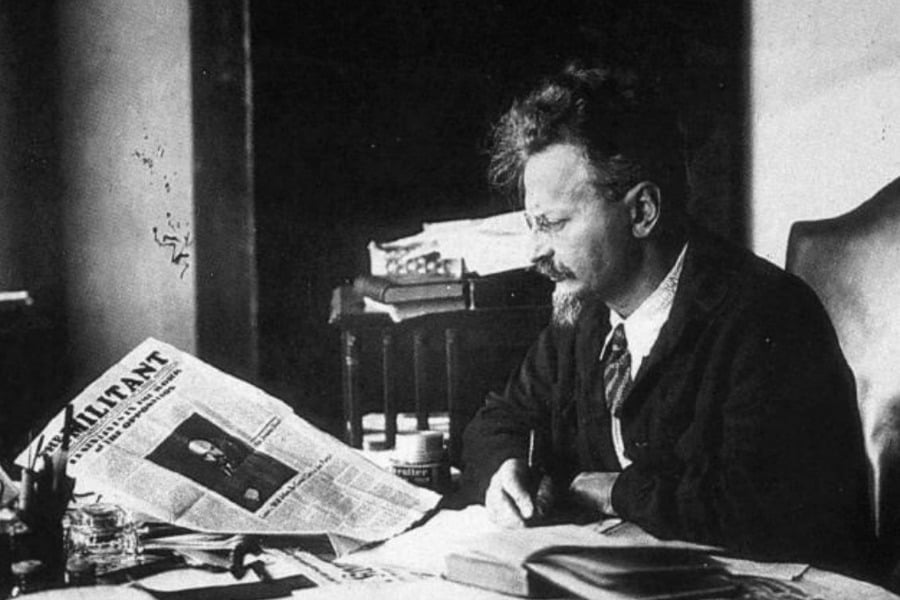 Expelled from the USSR by Stalin, for the man who created the Red Army and whose role in the victory of the October Revolution was second only to that of Lenin there was no refuge and no safe resting place on earth. One after another the door was slammed firmly shut. Those states that called themselves democracies and liked to compare themselves favourably with the Bolshevik “dictators” showed no more tolerance than all the others.
Expelled from the USSR by Stalin, for the man who created the Red Army and whose role in the victory of the October Revolution was second only to that of Lenin there was no refuge and no safe resting place on earth. One after another the door was slammed firmly shut. Those states that called themselves democracies and liked to compare themselves favourably with the Bolshevik “dictators” showed no more tolerance than all the others.
Britain, which had earlier given refuge to Marx, Lenin and Trotsky himself, now under a Labour government, refused him entry. France and Norway behaved, in essence, no differently, placing such restrictions on Trotsky’s movements and activities that “sanctuary” became indistinguishable from imprisonment. Finally, Trotsky and his faithful companion Natalia Sedova found refuge in Mexico under the government of the progressive bourgeois Lazar Cardenas.
Even in Mexico, Trotsky was not safe. The arm of the GPU was long. By raising his voice against the Kremlin clique, Trotsky remained a mortal danger to Stalin, who, it has now been demonstrated, ordered all Trotsky’s writings to be placed on his desk each morning. He extracted a terrible revenge on his opponent. As long ago as the 1920s, Zinoviev and Kamenev had warned Trotsky: “You think Stalin will answer your ideas. But Stalin will strike at your head!”
In the years prior to his assassination, Trotsky had witnessed the assassination of one of his sons and the disappearance of the other; the suicide of his daughter, the massacre of his friends and collaborators inside and outside the USSR, and the destruction of the political gains of the October revolution. Trotsky’s daughter Zinaida committed suicide as a result of Stalin’s persecution.
After the suicide of his daughter, his first wife, Alexandra Sokolovskaya, an extraordinary woman who perished in Stalin’s camps, wrote a despairing letter to Trotsky: “Our children were doomed. I do not believe in life any more. I do not believe that they will grow up. All the time I am expecting some new disaster.’ And she concludes: “It has been difficult for me to write and mail this letter. Excuse my cruelty towards you, but you should know everything about our kith and kin.” (Quoted by Deutscher, op. cit. p. 198.)
Leon Sedov, Trotsky’s eldest son, who played a key role in the International Left Opposition, was murdered while recovering from an operation in a Paris clinic in February 1938. Two of his European secretaries, Rudolf Klement and Erwin Wolff, were also killed. Ignace Reiss, an officer of the GPU who publicly broke with Stalin and declared in favour of Trotsky, was yet another victim of Stalin’s murder machine, gunned down by a GPU agent in Switzerland.
The most painful blow came with the arrest of Trotsky’s younger son Sergei, who had stayed behind in Russia, believing that, as he was not politically active, he would be safe. Vain hope! Unable to take his revenge on the father, Stalin resorted to that most refined torture—applying pressure on parents through their children. No-one can imagine what torments were suffered at this time by Trotsky and Nataliya Sedova. Only in recent years did it emerge that Trotsky even contemplated suicide, as a possible way of saving his son. But he realised that such an act would not save Sergei and would give Stalin just what he wanted. Trotsky was not wrong. Sergei was already dead, shot it seems in secret in 1938, having steadfastly refused to denounce his father.
One by one, Trotsky’s old collaborators had fallen victim to Stalin’s Terror. Those who refused to recant were physically liquidated. But even capitulation did not save the lives of those who surrendered. They were executed anyway. The last of the leading figures of the Opposition inside the USSR who had held out was the great Balkan Marxist and veteran revolutionary Christian Rakovsky. When Trotsky heard of Rakovsky’s capitulations he wrote the following passage in his diary:
“Rakovsky was virtually my last contact with the old revolutionary generation. After his capitulation there is nobody left. Even though my correspondence with Rakovsky stopped, for reasons of censorship, at the time of my deportation, nevertheless the image of Rakovsky has remained a symbolic link with my old comrades-in-arms. Now nobody remains. For a long time now I have not been able to satisfy my need to exchange ideas and discuss problems with someone else. I am reduced to carrying on a dialogue with the newspapers, or rather through the newspapers with facts and opinions.
“And still I think that the work in which I am engaged now, despite its extremely insufficient and fragmentary nature, is the most important work of my life—more important than 1917, more important than the period of the Civil War or any other.
“For the sake of clarity I would put it this way. Had I not been present in 1917 in Petersburg, the October Revolution would still have taken place—on the condition that Lenin was present and in command. If neither Lenin nor I had been present in Petersburg, there would have been no October Revolution: the leadership of the Bolshevik Party would have prevented it from occurring—of this I have not the slightest doubt! If Lenin had not been in Petersburg, I doubt whether I could have managed to conquer the resistance of the Bolshevik leaders. The struggle with ‘Trotskyism’ (i.e., with the proletarian revolution) would have commenced in May, 1917, and the outcome of the revolution would have been in question. But I repeat, granted the presence of Lenin the October Revolution would have been victorious anyway. The same could by and large be said of the Civil War, although in its first period, especially at the time of the fall of Simbirsk and Kazan, Lenin wavered and was beset by doubts. But this was undoubtedly a passing mood which he probably never even admitted to anyone but me.
“Thus I cannot speak of the ‘indispensability’ of my work, even about the period from 1917 to 1921. But now my work is ‘indispensable’ in the full sense of the word. There is no arrogance in this claim at all. The collapse of the two Internationals has posed a problem which none of the leaders of these Internationals is at all equipped to solve. The vicissitudes of my personal fate have confronted me with this problem and armed me with important experience in dealing with it. There is now no one except me to carry out the mission of arming a new generation with the revolutionary method over the heads of the leaders of the Second and Third International. And I am in a complete agreement with Lenin (or rather Turgenev) that the worst vice is to be more than 55 years old! I need at least about five more years of uninterrupted work to ensure the succession.” (Trotsky, Diary In Exile, pp. 53-4.)
But Trotsky was not to be granted his wish. After various attempts, the GPU finally managed to put an end to Trotsky’s life on 20th August 1940.
The revenge of history
When the Stalinist agent Ramon Mercader brought his pickaxe crashing down on the skull of his defenseless victim, Stalin’s wish appeared to have been granted. It is in fact a very easy thing to terminate the life of an individual. The human animal is a frail and fragile thing. It can be easily killed by a knife, a bullet or an ice pick. But it is not possible to murder an idea whose time has come.
The fight for the ideas of Leon Trotsky – the ideas of Leninism, of Bolshevism and of the October Revolution – did not end on 20 August 1940. On the contrary, that struggle continues unabated to the present day. The memory of Leon Trotsky continues to be celebrated by class conscious workers and revolutionary youth all over the world. That of Stalin, the gravedigger of the October Revolution, is reviled as that of Cain who murdered his brother in order to usurp his inheritance.
In spite of everything, right up to the end, Trotsky remained absolutely firm in his revolutionary ideas. His testament reveals enormous optimism in the socialist future of humanity. But his real testament is to be found in his books and other writings, which continue to be a treasure-house of Marxist ideas for the new generation of revolutionaries. The fact that nowadays, the spectre of “Trotskyism” continues to haunt the bourgeois, reformist and Stalinist leaders is sufficient proof of the resilience of the ideas of Bolshevism-Leninism. For that, essentially, is what “Trotskyism” signifies.
After the delay of almost eight decades, Trotsky’s biography of Stalin has been reborn. In its pages the revolutionary workers and youth of today will find a treasure trove of Marxist theory and ideas, a mine of information about the history of Bolshevism and the Russian revolution and an answer to the question of how the greatest revolution in history degenerated into a monstrous totalitarian and bureaucratic regime.
The very fact that the launching of the book, which at the moment is only available in English (a Spanish translation is in preparation) is taking place in Mexico, in the house where Trotsky lived, worked and died the death of a revolutionary martyr, is a fitting monument to that great revolutionary internationalist. It is the final revenge of history against Stalin and Stalinism and a living confirmation of the vitality of the ideas of Marxism.

